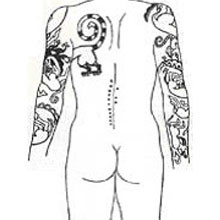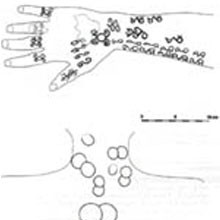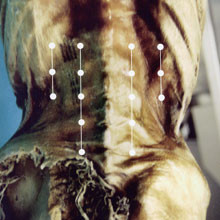A medical report from the stone age?
Authors: L. Dorfer, M. Moser, F. Bahr, K. Spindler, E. Egarter-Vigl, S. Giullën, G. Dohr, T. Kenner
During the last decades of this century several prehistoric human mummies with well-preserved tattoos have been found in Siberia, Peru, and Chile. Some of the tattoos were obviously decorative, but others were of less aesthetic value and of unknown use. In the well-preserved mummy of a Scythian horseman ( figure 1), there are ornamental and non-ornamental tattoos. The difference in the tattoos is so obvious that there is speculation about a possible therapeutic importance of the ones in the perivertebral and retromalleolar region.
In 1992, a mummy was discovered in the necropolis of Chiribaya Alta, southern Peru. The mummy had ornamental tattoos depicting stylised apes, birds, and reptiles on the forearms, hands, and lower legs (figure 2, top). There were additional tattoos on the neck and the upper part of the back. They are circular, of simple shape, and remain hidden by the neckhairs and the clothing (figure 2, bottom). The hidden position of these marks points to the possibility that they have therapeutic importance (SG, KS, unpublished observations).





